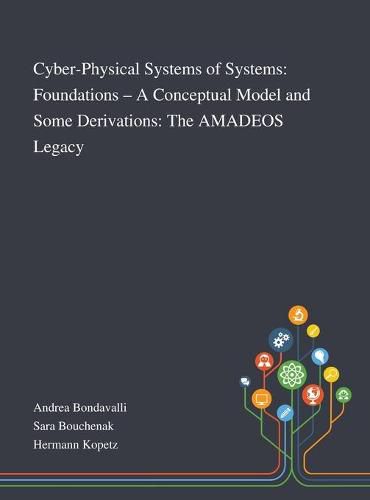Readings Newsletter
Become a Readings Member to make your shopping experience even easier.
Sign in or sign up for free!
You’re not far away from qualifying for FREE standard shipping within Australia
You’ve qualified for FREE standard shipping within Australia
The cart is loading…






This title is printed to order. This book may have been self-published. If so, we cannot guarantee the quality of the content. In the main most books will have gone through the editing process however some may not. We therefore suggest that you be aware of this before ordering this book. If in doubt check either the author or publisher’s details as we are unable to accept any returns unless they are faulty. Please contact us if you have any questions.
Technical Systems-of-Systems (SoS) - in the form of networked, independent constituent computing systems temporarily collaborating to achieve a well-defined objective - form the backbone of most of today’s infrastructure. The energy grid, most transportation systems, the global banking industry, the water-supply system, the military equipment, many embedded systems, and a great number more, strongly depend on systems-of-systems. The correct operation and continuous availability of these underlying systems-of-systems are fundamental for the functioning of our modern society.The 8 papers presented in this book document the main insights on Cyber-Physical System of Systems (CPSoSs) that were gained during the work in the FP7-610535 European Research Project AMADEOS (acronym for Architecture for Multi-criticality Agile Dependable Evolutionary Open System-of-Systems). It is the objective of this book to present, in a single consistent body, the foundational concepts and their relationships. These form a conceptual basis for the description and understanding of SoSs and go deeper in what we consider the characterizing and distinguishing elements of SoSs: time, emergence, evolution and dynamicity. This work was published by Saint Philip Street Press pursuant to a Creative Commons license permitting commercial use. All rights not granted by the work’s license are retained by the author or authors.
$9.00 standard shipping within Australia
FREE standard shipping within Australia for orders over $100.00
Express & International shipping calculated at checkout
This title is printed to order. This book may have been self-published. If so, we cannot guarantee the quality of the content. In the main most books will have gone through the editing process however some may not. We therefore suggest that you be aware of this before ordering this book. If in doubt check either the author or publisher’s details as we are unable to accept any returns unless they are faulty. Please contact us if you have any questions.
Technical Systems-of-Systems (SoS) - in the form of networked, independent constituent computing systems temporarily collaborating to achieve a well-defined objective - form the backbone of most of today’s infrastructure. The energy grid, most transportation systems, the global banking industry, the water-supply system, the military equipment, many embedded systems, and a great number more, strongly depend on systems-of-systems. The correct operation and continuous availability of these underlying systems-of-systems are fundamental for the functioning of our modern society.The 8 papers presented in this book document the main insights on Cyber-Physical System of Systems (CPSoSs) that were gained during the work in the FP7-610535 European Research Project AMADEOS (acronym for Architecture for Multi-criticality Agile Dependable Evolutionary Open System-of-Systems). It is the objective of this book to present, in a single consistent body, the foundational concepts and their relationships. These form a conceptual basis for the description and understanding of SoSs and go deeper in what we consider the characterizing and distinguishing elements of SoSs: time, emergence, evolution and dynamicity. This work was published by Saint Philip Street Press pursuant to a Creative Commons license permitting commercial use. All rights not granted by the work’s license are retained by the author or authors.